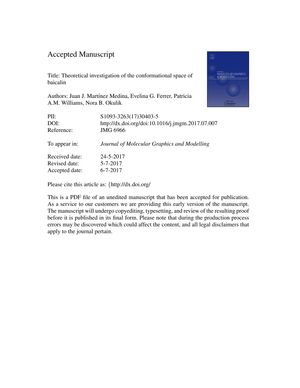Theoretical Investigation of the Conformational Space of Baicalin
July 2017
in “
Journal of Molecular Graphics & Modelling
”

TLDR The study found that baicalin has different stable shapes in gas and water, with two shapes better for interacting with positive charges in water.
The document details a study on the conformational space of baicalin, a pharmacologically active flavonoid, in both gas phase and aqueous solution. The study identified eight conformers in gas phase and five in aqueous solution, with the BCLa2TT and BCLAITT conformers showing a shift in stability from low in gas phase to high in aqueous solution. This shift is attributed to the t₁ angle's influence on the glucuronide unit's position. The study also found that these two conformers are most favorable for interaction with positively charged species in aqueous media. Conformational analysis was performed using density functional theory at the B3LYP/6-311++G** level, with solvent effects considered using a polarizable continuum model. The study concluded that the B3LYP/6-31G* level is adequate for studying baicalin and that the most stable conformers involve the a and b groups, with the cis configuration of the t5 angle being more stable in gas phase. Additionally, the study confirmed intramolecular hydrogen bond interactions in baicalin and found that the molecular electrostatic potential indicates higher reactivity in aqueous solution, particularly for conformers with a trans configuration of the OH group on ring A. The stability and reactivity of baicalin conformers are not significantly affected by the aqueous solvent according to frontier molecular orbital analysis.

